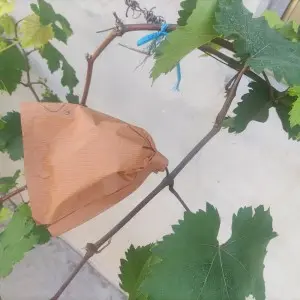Srp . 21, 2024 03:21 Back to list
Enhancing Pear Pollen Tube Growth for Improved Fruit Development and Quality
The Significance of High-Quality Pear Pollen Tube Growth in Fruit Production
The process of pollination is crucial for the reproduction of flowering plants, and in the context of fruit production, the growth of pollen tubes is a pivotal factor that directly influences fruit quality and yield. Among various fruit species, pears (Pyrus spp.) hold a significant position in agriculture and commerce. The successful fertilization of pear flowers is reliant on the efficient growth of pollen tubes, which transport sperm cells to the ovules for fertilization. This article explores the significance of high-quality pear pollen tube growth and its impact on fruit production.
The Significance of High-Quality Pear Pollen Tube Growth in Fruit Production
One crucial aspect of high-quality pollen tube growth is the genetic compatibility between the pollen and the ovule. Not all pollen grains are compatible with the ovules of a given pear variety. Cross-pollination between different varieties often results in better fruit set and quality, as it enhances genetic diversity. Therefore, selecting appropriate pollen donors that are genetically compatible is essential for promoting successful pollen tube growth and achieving higher fruit yields.
high quality pear pollen tube growth

Environmental factors also play a significant role in the quality of pollen tube growth. Temperature, humidity, and soil moisture can greatly affect the growth rate of pollen tubes. Ideal conditions typically promote vigorous pollen tube elongation, while adverse conditions can lead to stunted growth or even complete failure of fertilization. Moreover, the availability of nutrients, particularly calcium and boron, is crucial for the structural integrity of pollen tubes. Providing optimal growing conditions can significantly enhance the growth rates of pollen tubes and, as a result, improve fruit quality and yield.
Research has also shown that the use of specific plant growth regulators can enhance pollen tube growth in pears. For instance, the application of gibberellins can improve pollen tube elongation and increase the likelihood of successful fertilization. However, it is essential to apply these regulators cautiously, as their effectiveness may vary depending on the specific cultivar and environmental circumstances.
In addition to the factors mentioned, the timing of pollination relative to flowering is critical for maximizing fruit yield. Pear trees often exhibit a phenomenon known as synchronous blooming, where multiple varieties flower simultaneously. This synchronization allows for better cross-pollination opportunities, promoting high-quality pollen tube growth. Successfully managing the bloom period through careful cultivar selection can lead to enhanced pollination success and increased fruit set.
In conclusion, the growth of high-quality pollen tubes is integral to successful pear fruit production. By understanding the genetic, environmental, and physiological factors that influence pollen tube growth and applying strategic interventions, growers can enhance pollination outcomes, leading to improved fruit quality and higher yields. Investment in research and agricultural practices that focus on the enhancement of pollen tube growth is essential for the sustainable production of pears and other fruit crops. Ultimately, fostering high-quality pollen tube growth not only benefits the agricultural sector but also ensures the availability of high-quality fruit for consumers.
-
Buy Premium Apple & Cherry Tree Pollen Grains High-Yield Pollination
NewsApr.29,2025
-
Premium Poplar Tree Pollen for Fruit Tree Pollination Supplier
NewsApr.29,2025
-
Maple Tree Pollen for Fruit Tree Varieties Bulk Supplier & Manufacturer
NewsApr.29,2025
-
Top Apple Pollen Collection Varieties for Factories & Suppliers
NewsApr.28,2025
-
Cottonwood Tree Pollen Suppliers Horticulture & Allergen Solutions
NewsApr.28,2025
-
Dock Pollen & Apricot Flower Pollen Suppliers Pure & Natural
NewsApr.28,2025